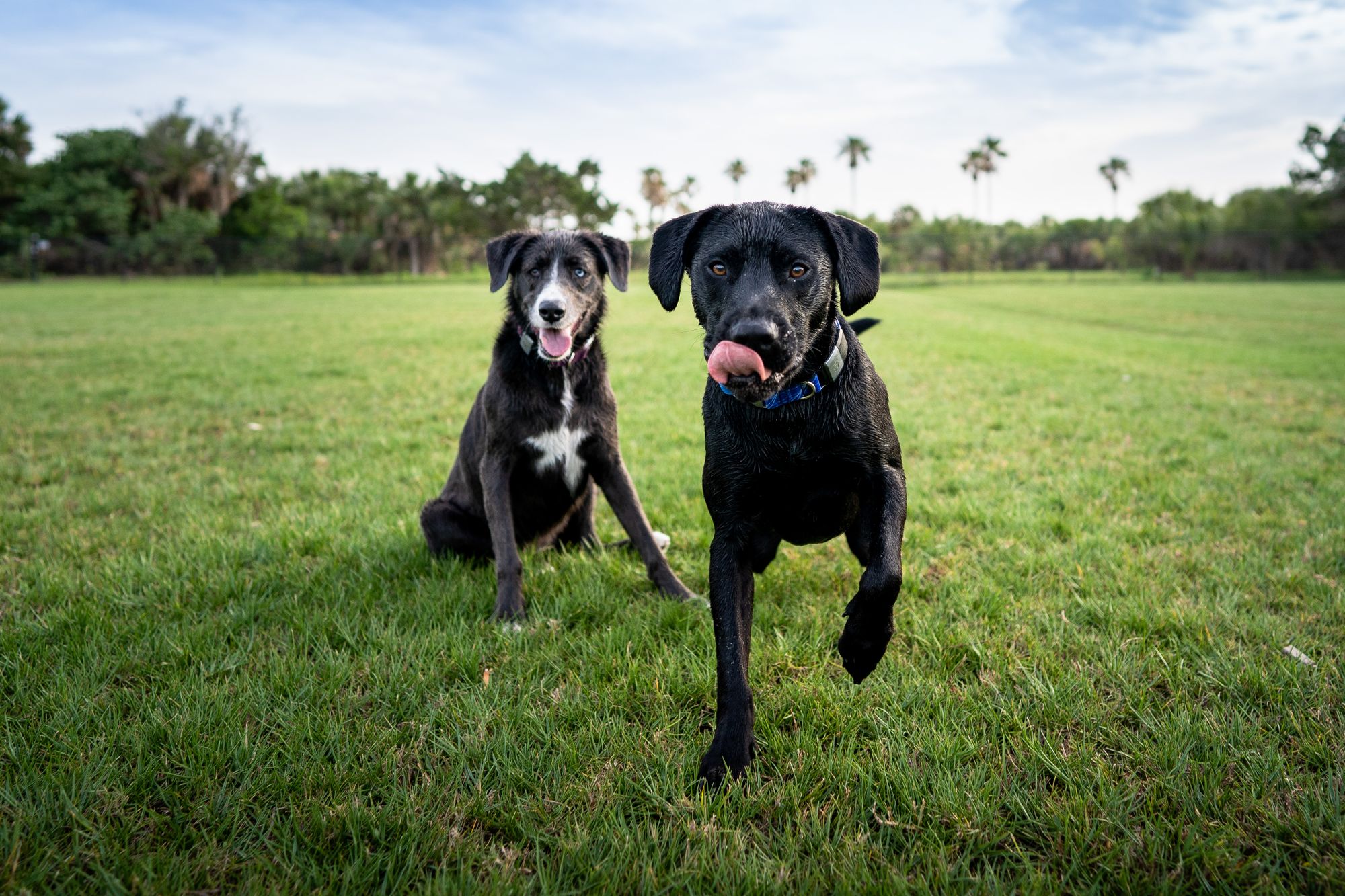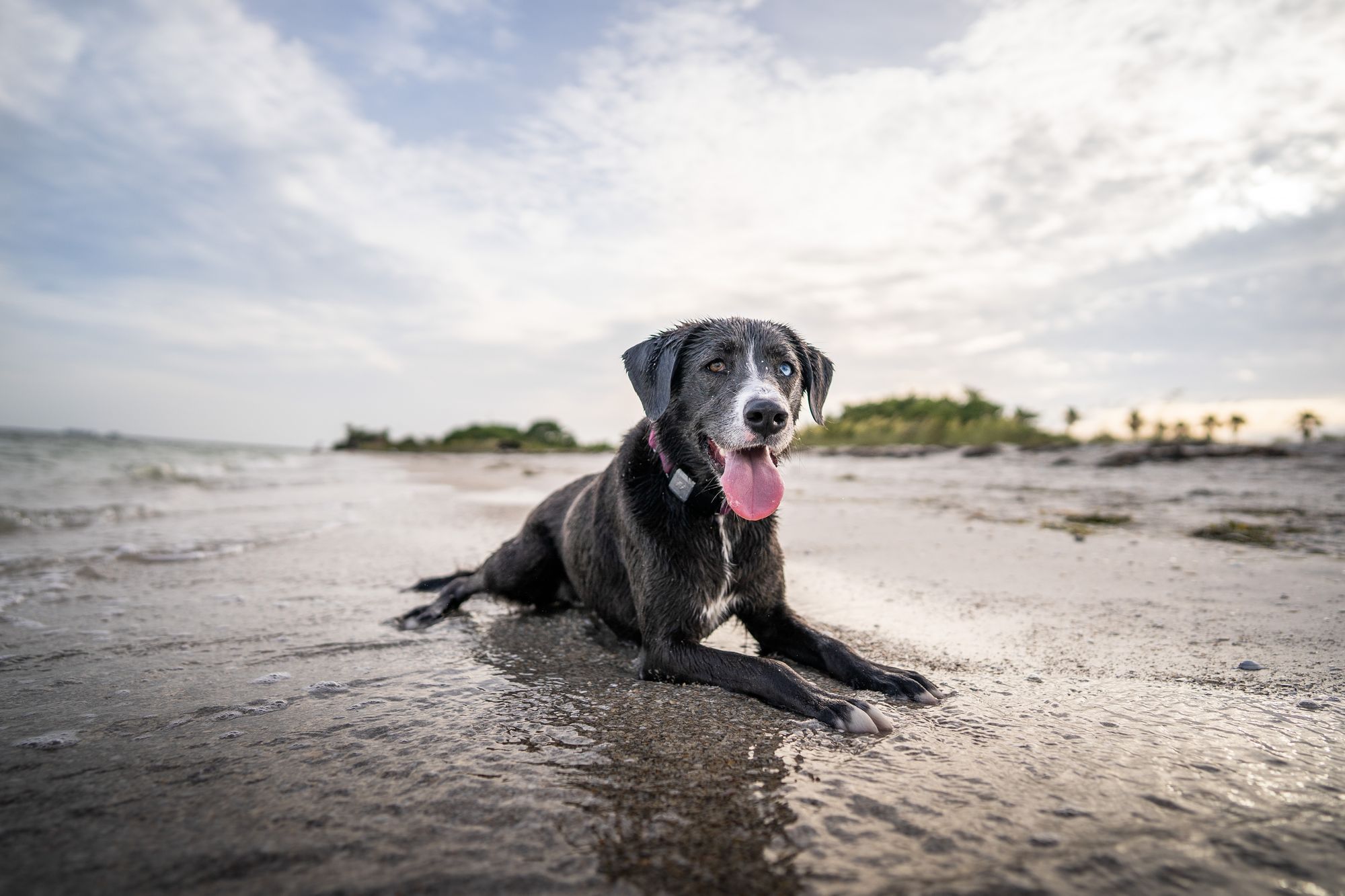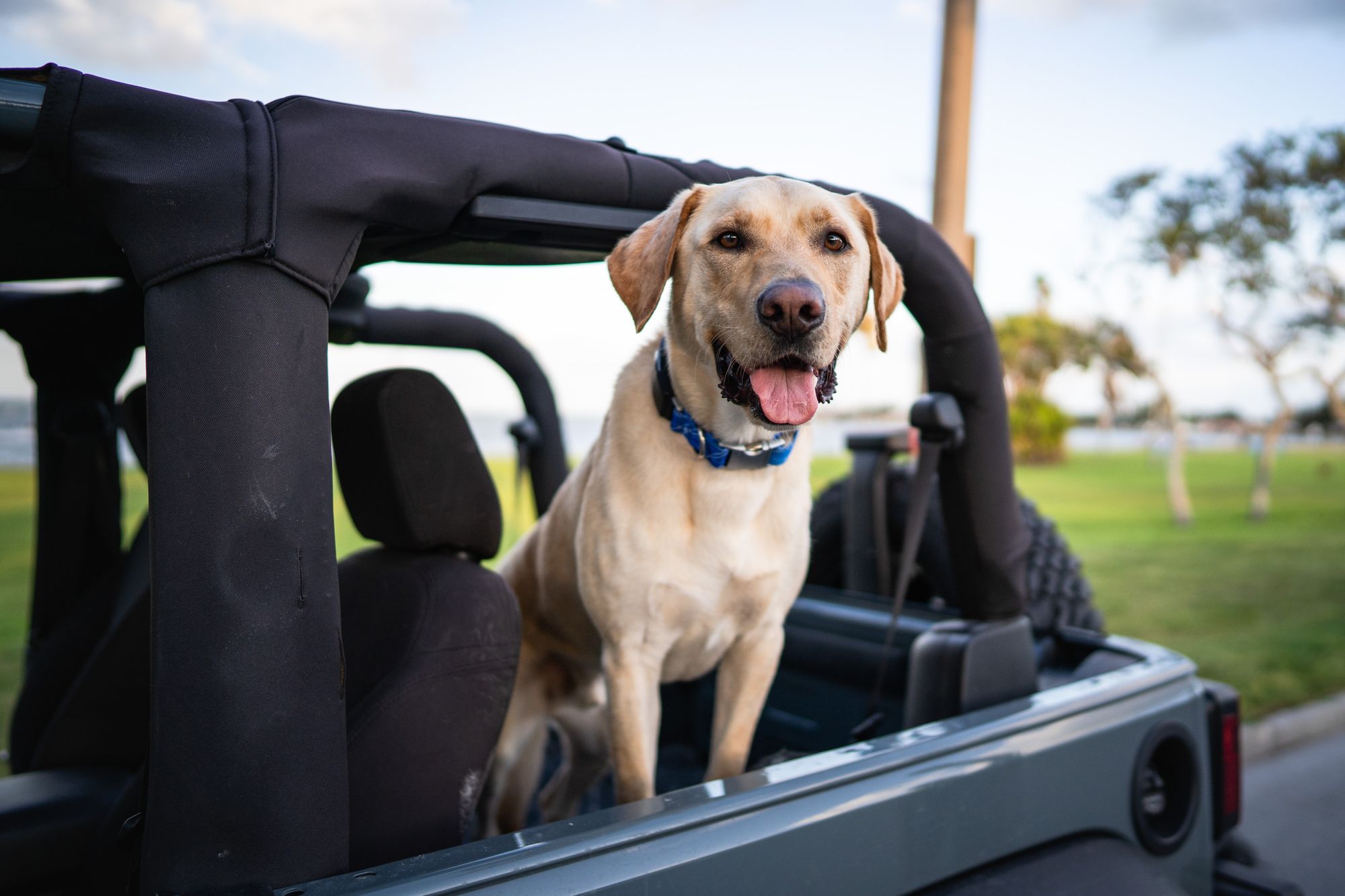Spring has come and gone, summer is now here, and we (hopefully) have been spending a lot of time outside taking advantage of the warm weather. Of course, we love to share the fun with our four-legged kids, and so we should. But, before you start your jogging treks, hiking excursions, or bicycle touring in the heat, with Rover by your side, it’s important for you to understand that summer safety goes beyond keeping your pets out of parked cars.

The First Precautions:
- It’s never a good idea to jump right into an exercise regimen full speed ahead. I recommend a gradual introduction into exercise to better increase your pet’s stamina. as well as prepare the pads of their feet.
- Dog pads can easily blister if too soft, or if the pavement is too hot. Start slow and increase the amount of exercise gradually to help the pads harden. An effective way to monitor this gradual increase of activity is with your Fi collar as it can quantify the amount of steps your dog is taking.
- Think about putting booties or paw protectors on their feet as a great to protect them from the heat and the elements.
Heading To A Park Or Hiking Area?
- Make sure your pet safely secured in your vehicle. There are several harnesses and “seatbelt” systems on the market to help you out. If your pet is small, a carrier will do the trick.
- Though it may be cute to see Calvin with his head out the window, soaking up the rays and enjoying the breeze, or watch Daisy scamper from your lap to the passenger seat to the back seat, but the danger factor far outweighs the freedom factor. Everyone should buckle up!
- Respect other pets’ “space” and boundaries. Don’t assume every dog is dying to play with yours, so be mindful of the local leash laws. You don’t want to turn a fun outing into an emergency room visit for you or anyone else.

When Is The Best Time Of Day To Exercise?
- Early in the morning or later in the evening. Keep in mind that in the evening after the sun is down, the pavement can still be pretty warm, as it retains heat for quite a while.
- If you can’t set your palm flat on the asphalt and hold it in place for 7 seconds, then it’s too hot for your pooch! Where possible, don’t forget those booties!
- Make sure to bring plenty of water for the both of you. Dehydration can be, literally, a killer! A dehydrated dog is much more likely to suffer from heat stroke.
- A good idea is to actually wet a bandana and wrap it around your dog’s neck while you’re jogging or hiking. For longer excursions, or for hotter climates, wet a bandana and place it in the freezer the night before so it will remain nice and cool a little longer. -Make regular stops in a shady area for water breaks, and to allow both of you to catch your breath. Remember, it’s not always about the destination—enjoy the journey, and take your time.
Dangers Of Too Much Heat
It is extremely important to recognize the early signs of heat stroke. Initially, a dog (or even a cat) who is on the verge of heat stroke will begin to pant uncontrollably and salivate excessively. Their tongues may look overly red—almost purplish—as they aren’t able to deliver enough oxygen. They will begin to feel very warm, almost hot, to the touch, especially their pads, tongue, and nose.

As soon as you begin to recognize any of these signs, it is critical to get your dog out of the heat immediately. If symptoms progress they may become weak to the point of collapse. Try to find a shady spot, and slowly moisten their mouths with cool water. Don’t try to force water into their mouths as you don’t want the water to go down the trachea into the lungs. Since much heat exchange takes place through the pads, try to soak the pads down in cool water as well. If you can, it would be helpful to wet them down completely with cool, not ice cold, water from a hose or a soaked towel. You probably won’t have a rectal thermometer handy, but if you did, you don’t want your dog’s (or cat’s) temperature to be over 104 degrees Fahrenheit. As soon as possible, try to transport your pet to your veterinarian or to the closest emergency hospital for care. Obviously, the best way to deal with heat stroke is to prevent it by exercising good judgment and common sense.
And don’t think that overheating comes only from over-exertion. Many dogs and cats can overheat lying around the house or backyard as well. When leaving pets outside during the summer, make sure that shade and fresh water are always available. There are many devices available that can provide water automatically or on-demand. A simple suggestion is to fill the water bowl the night before and place it in the freezer. The next day, leave the bowl outside with the big block of ice, which, of course, will melt slowly allowing a continuous supply of nice cold water. This also discourages a dog from playing with, and maybe tipping over, his or her water bowl. If your dog likes a dog house, make sure there are plenty of vents to ensure cross ventilation and better temperature control. Indoor dogs and cats also need to escape from the heat. Make sure the house isn’t kept too warm. Keep at least one room cooler by leaving the shades or drapes closed. You might also think about “mixed feeding,” meaning try adding some canned food (which is about 70% water) to their diets. If your dogs are like most, they’ll love it!
For more information on heat induced illness, check out this article on Off Leash.
Pets And Parked Cars
Enough has been written about pets and parked cars, so I’m sure you are all aware of that potential deadly hazard. NEVER DO IT-- not even in the shade or “only for a few minutes!” Enough said.

The Perfect Summer 'Do
Should be shave our pets down for the summer?
- The quick answer is “NO!” The truth is, their coats are like insulators—like a Thermos. The coat functions to help pets maintain their ambient body temperatures—especially the double coated arctic-type breeds. It keeps them warm during the winter, and cool during the summer. It is important to keep their coats healthy for them to function properly, so regular brushing is key! It would be ok for some dogs to give them a puppy trim, but not a complete shave (like a “Lion’s Clip”).
- Also, white or light coated dogs, or those with thin coats can be at risk for sunburn! Yes, dogs that are over-exposed to direct sunlight can get skin cancer or Nasal Solar Dermatitis on their snouts.
- It is recommended to apply sunblock to any hairless or thin-coated areas as added protection. Avoid PABA (para-aminobenzoic acid) or Zinc, as they may be toxic if ingested, and stick to PABA-free, high SPF sprays that are safe for children.
Summer is a great time of year to further bond with your pets. I encourage all of you to get outdoors, enjoy the warmth and sunshine, and to include your four-legged kids in your activities. Just remember to play it smart and keep them safe.

